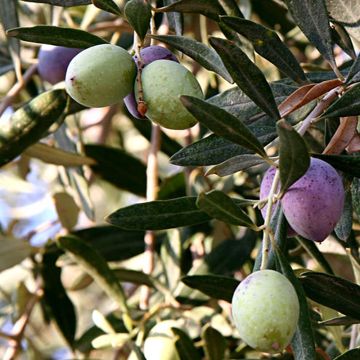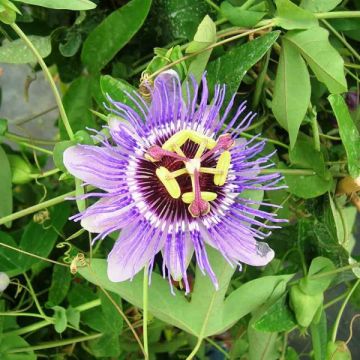The Macadamia 'Beaumont' (Macadamia integrifolia x M. tetraphylla) is an excellent Australian fruit variety. This tropical tree is mainly grown for its tasty nuts, but it is also appreciated for its decorative foliage and beautiful pink-red spring flowering. 'Beaumont' adapts very well to container culture in temperate climates, adding an exotic touch to the terrace or veranda. It will delight enthusiasts of original and exotic fruit trees.
The Macadamia 'Beaumont' is an interspecific hybrid selected in Australia in the 1960s for its disease resistance, productivity, and quick fruiting. It belongs to the Proteaceae family. In their natural environment, macadamias thrive in the subtropical forests of Oceania, particularly in Queensland, where the warm and humid climate allows them to flourish. Their cultivation is possible in the ground in southern Europe, in a Mediterranean-type climate (without frost), with regular watering in summer.
The Macadamia 'Beaumont' is a tree with a dense, rounded habit. When grown in a container, it typically reaches between 2 and 3 m in height. In the ground, it can reach up to 10 m in height. Its leaves are elongated, dark green, and measure between 20 and 30 cm. They are thick and leathery, with sometimes slightly dentate edges, especially on young leaves. New shoots have a decorative reddish tint. The foliage persists in winter.
The flowering of Macadamia 'Beaumont' consists of long clusters of pendulous pink-red flowers, which appear in spring, between March and May. These inflorescences measure between 15 and 30 cm and are particularly decorative. Once the flowering is over, the tree produces round nuts, enclosed in a very hard shell. These nuts, once cracked open, reveal a rich and sweet almond, delicious as is or roasted. This cultivar is self-fertile, meaning it can bear fruit without requiring the presence of a second tree for pollination. Having a nearby congenitor increases the tree's productivity. Fruiting may take time for container-grown specimens: expect 6 to 7 years. Macadamia 'Beaumont' prefers well-drained, slightly acidic to neutral soil, and a sunny exposure. It tolerates temperatures down to 3-5°C, but must be protected from frost in winter, especially when grown in a container. It is a relatively low-maintenance tree, with notable disease resistance. However, like many tropical plants, it does not tolerate waterlogged soils, so good drainage is essential.
Macadamia 'Beaumont' pairs well with other orangery plants such as lemon trees and orange trees. It can also be placed next to an olive tree for texture contrast. Consider placing it alongside a Cycas revoluta and a red dragon fruit to create an exotic setting around this nut tree.




















































